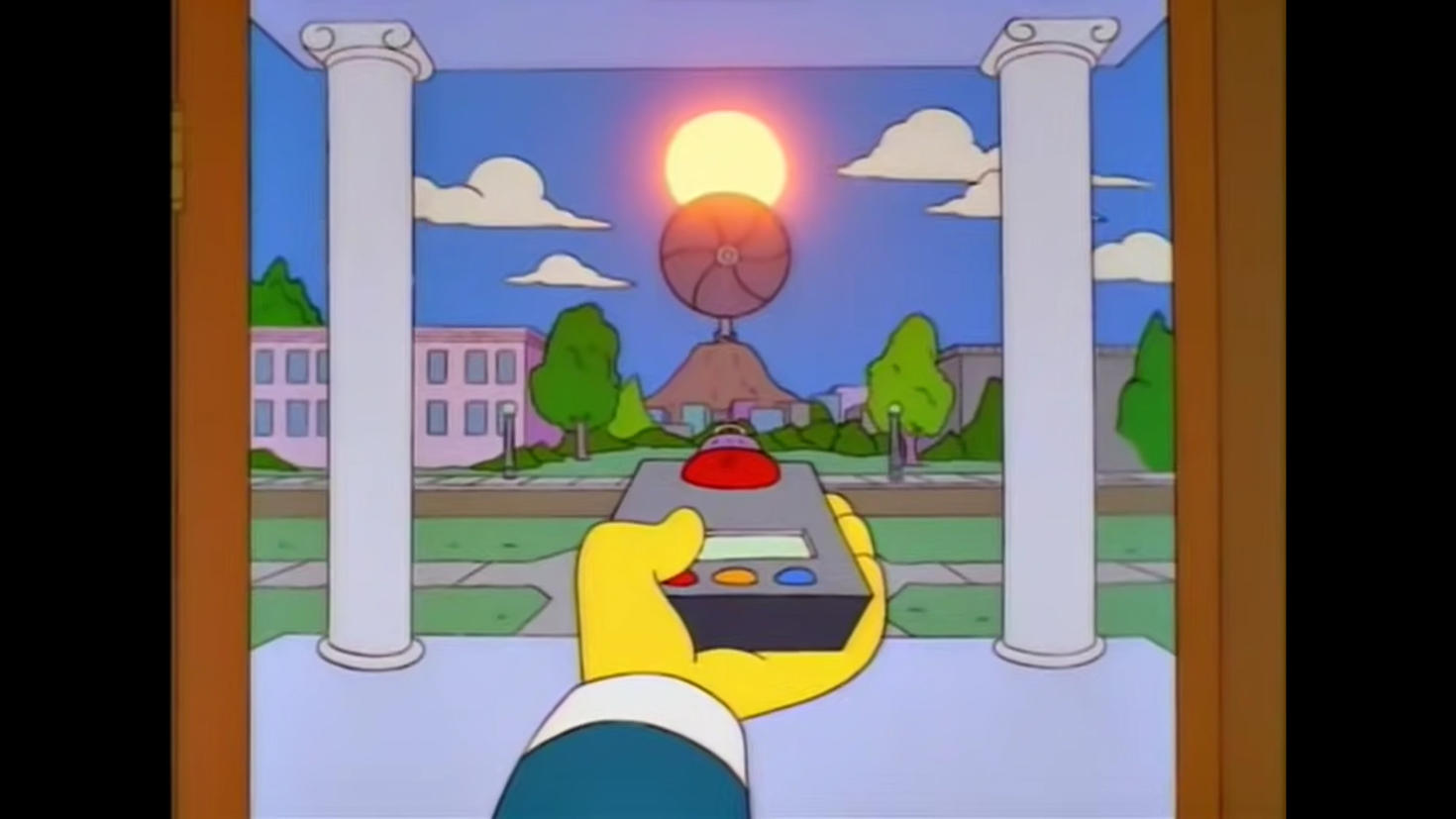In the safety world, the hierarchy of controls stands as a guiding principle to eliminate hazards, mitigate risks and prevent accidents. It involves considering steps in a ranked and sequential order to choose the most effective means of eliminating or reducing hazards and the risks that derive from them. Imagine, for instance, the case of Mr. Burns blocking out the sun in Springfield. This scenario, while fictional, demonstrates the application of the hierarchy of controls.

1. Elimination: Physically remove the hazard
At the top of the hierarchy lies elimination, the most effective control measure. While we may not have a sun-blocking device looming over our campus (like Mr. Burns in Springfield), the principle remains relevant. We can prevent accidents before they occur by eliminating and removing hazards. We cannot prevent the eclipse from occurring, so on to the next level of the hierarchy!
2. Substitution: Replace the hazard
Next is substitution, where a hazard is replaced with a less harmful one to reduce harm. We simply can't substitute the sun.
3. Engineering controls: Isolate people from the hazard
Engineering controls follow; these focus on isolating individuals from hazards. Installing barriers or shields to prevent harmful effects is, in effect, exactly what Mr. Burns does here, albeit for his evil and heinous plan.
4. Administrative controls: Change the way people work
Administrative controls involve altering work practices and policies. They reduce the exposure to the hazard or risk by reducing exposure opportunities or time exposed. For instance, if Mr. Burns had been operating under strict oversight or regulatory frameworks that closely monitored his actions, the risks linked to his power plant and his behaviours might have been minimized. Identifying and evaluating hazards and risks will help prioritize the action required.
5. PPE: Protect people with personal protective equipment
Finally, personal protective equipment (PPE) serves as the last line of defence and relies on proper fit, use, and maintenance. In our scenario, equipping the town with specialized gear to endure prolonged darkness could have mitigated the immediate effects of Mr. Burns’ actions, but it would not address the root cause of the issue.
Understanding and applying the hierarchy of controls is key in ensuring safety and preventing accidents. By prioritizing measures at the top of the hierarchy, we can effectively minimize risks and prevent dangerous situations.
Did you know that the uOttawa’s Health and Safety Management System helps the University maintain a safe work environment for all staff, faculty and students? Get to know our safety manuals, procedures and guidelines.
If you have any questions about safety on campus, send an email to the Office of the Chief Risk Officer.
